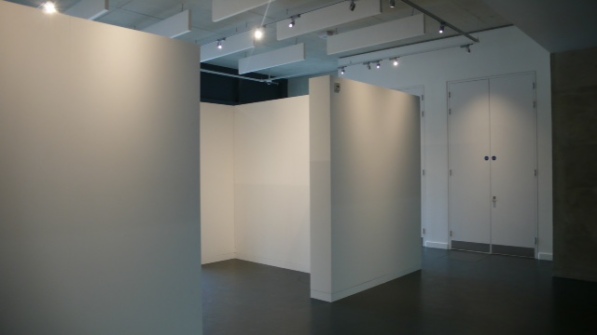
Here are some thoughts about the best ways to prepare a room to be used as a permanent gallery. Of course not all of these things are possible and with every space a degree of compromise will be necessary.Pros and cons of the rail and wire hanging system. Pros: the artists do not need to refill and repaint the walls and can hang over a concrete wall. Cons: that artwork does not hang flat on the wall and is not secure. Some venues get nervous about returning the walls back to how they were but I believe it is easy to fill and paint a wall or two and so would avoid the hanging rail.
- Plinth. In my experience plinths for sculpture are best built out of MDF by a carpenter.
- Window vinyl signs. The gallery’s name is a must. You can even have other information on the window too – for example about the space and what art it represents.
- Sockets and plugs should be placed low down but somewhere in the centre of the space to allow for video work/screens to be plugged in using an extension lead that would then be taped to the floor.
- Track Lighting is great in a gallery with each spot flexible enough to move on to the spaces where you want light. But the track should be away from the walls otherwise you get glare on the glass of the framed work or the surface of the canvas.
- White walls work however not all walls have to be white. Dark grey walls can also look great (we have all seen this at the National Gallery or the Tate).
- A bench. Not essential but a nice addition so that people can sit and read the gallery information sheets or catalogues.
- A kitchen. This is a useful space as it enables artists to prepare food and drink for the Private View/Opening party.
